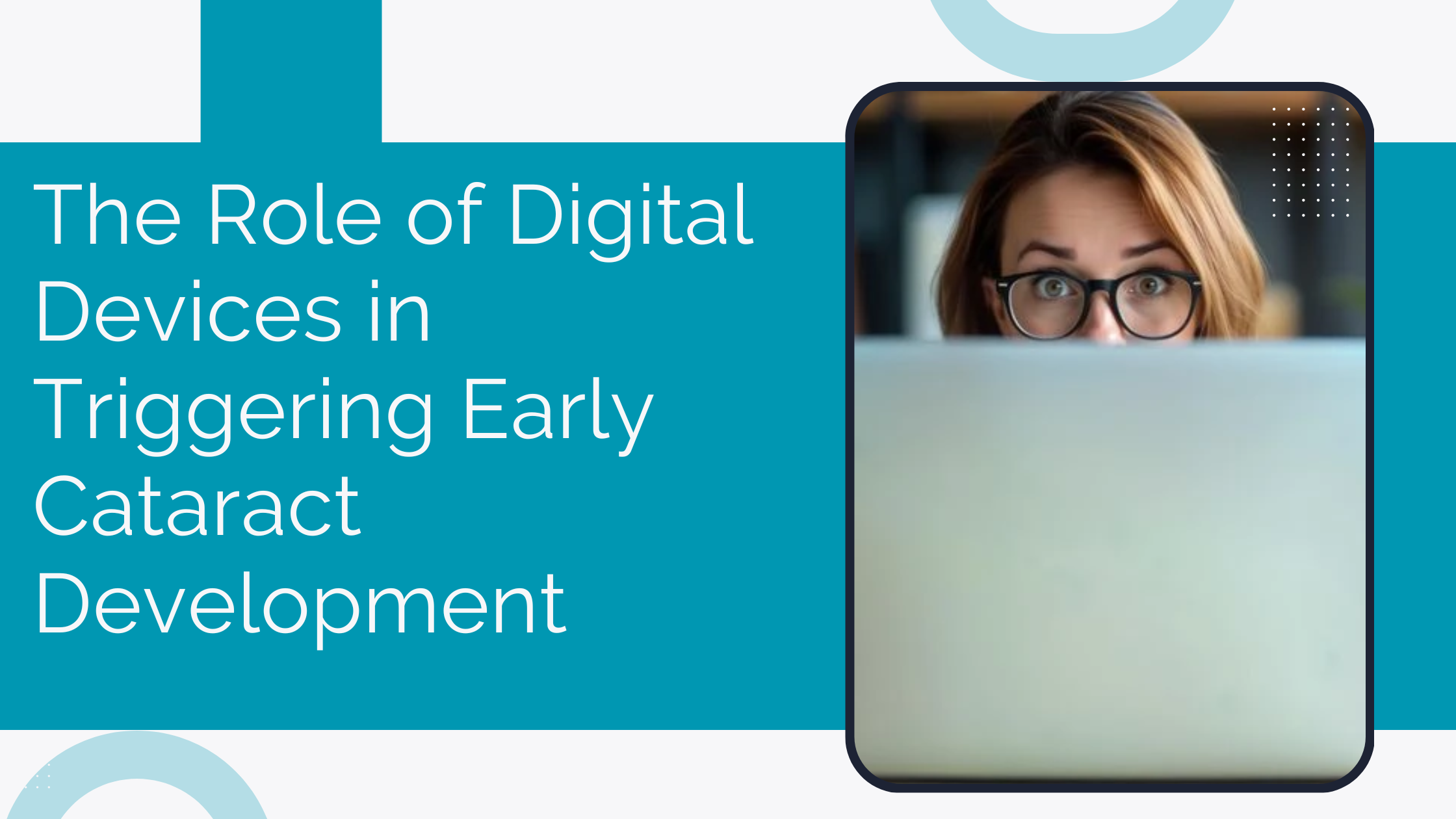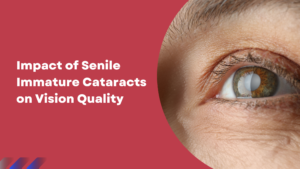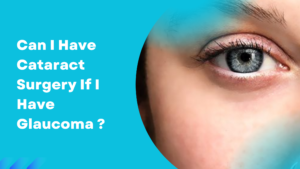Introduction
In today’s fast-paced digital era, screens have become an integral part of our lives — from smartphones, laptops, televisions and tablets. While these devices bring immense convenience, their excessive use has raised significant concerns regarding eye health. One alarming trend is the increasing incidence of early-onset cataracts, even among younger adults who spend prolonged hours in front of digital screens.
Prolonged exposure to blue light emitted from digital devices can cause oxidative stress in the lens, accelerating its clouding and leading to premature cataract formation. When it comes to early detection, accurate diagnosis, and safe surgical management, consulting an experienced specialist is crucial. If you’re seeking the most trusted Cataract Surgeon in Mumbai, Dr. Vinay Agrawal at Clear Vision Eye Centre provides expert care using the latest technology and precision-driven cataract treatment techniques.
Understanding Cataracts
A cataract is a clouding of the natural lens inside the eye, which leads to blurred or hazy vision. The lens plays a vital role in focusing light onto the retina, allowing clear vision. Over time, proteins within the lens begin to break down and clump together, forming cloudy patches that interfere with light transmission.
While cataracts are commonly associated with aging, various lifestyle and environmental factors can accelerate their onset — one of the major contributors being prolonged exposure to digital screens and artificial light sources.
How Digital Devices Contribute to Early Cataract Formation
1. Blue Light Exposure and Oxidative Stress
Digital screens emit high-energy visible (HEV) blue light, which penetrates deep into the eye and can cause cumulative destruction to the lens and retina. This light increases the production of free radicals within the lens fibres, leading to oxidative stress. Over time, this oxidative stress disrupts lens proteins, initiating the early stages of cataract development.
2. Reduced Blinking and Dry Eyes
Constant use of digital devices leads to reduced blinking frequency — a condition often termed “Digital Eye Strain” or “Computer Vision Syndrome.” Insufficient blinking results in dryness and inflammation, which indirectly affects lens metabolism and health. When the lens receives inadequate nourishment and oxygen, its transparency may be compromised.
3. UV Light Sensitivity from Screen Glare
Although UV radiation is primarily a concern outdoors, constant exposure to screen glare under artificial lighting can mimic similar oxidative damage. Continuous strain under such conditions can hasten age-related changes in the lens, paving the way for earlier cataract formation.
4. Disruption of Sleep and Hormonal Balance
Overuse of devices, especially before bedtime, disrupts melatonin production — a hormone responsible for regulating sleep and acting as a natural antioxidant in the eyes. A disturbed sleep cycle weakens the body’s ability to repair oxidative damage, further accelerating lens deterioration.
5. Poor Posture and Blood Circulation
Extended screen time often leads to poor posture and restricted blood flow, including to the ocular tissues. Limited nutrient and oxygen delivery to the eyes can impact lens clarity, indirectly increasing cataract risk over time.
Identifying the Early Signs of Cataract Development
Cataracts usually develop slowly, but when triggered by external factors like digital exposure, the onset can occur earlier than expected. Some common symptoms include:
- Blurred, cloudy, or hazy vision
- Increased glare sensitivity, especially at night
- Difficulty focusing on screens or reading fine text
- Faded colours or double vision in one eye
- Often, changes in eyeglass prescription
If you experience any of these symptoms, it’s advisable to undergo a comprehensive eye examination to detect early lens changes. Early intervention can slow the progression and prevent severe visual impairment.
Prevention Measures for Digital Device Users
While it may not be possible to eliminate screen use entirely, adopting healthy visual habits can significantly reduce the risk of early cataract formation.
1. Following the 20-20-20 Rule
After every 20 minutes of screen time, look at an object 20 feet away for at least 20 seconds. This allows your eyes to relax and minimizes strain.
2. Use Anti-Reflective and Blue Light Filters
Wearing glasses with blue light-blocking lenses or using screen filters can reduce the harmful impact of HEV light on your eyes.
3. Maintain Proper Screen Distance and Lighting
Keep digital devices at arm’s length and ensure your environment has adequate ambient lighting to reduce glare.
4. Following a Nutrient-Rich Diet
Antioxidants like vitamins C and E, lutein, and zeaxanthin help neutralize free radicals in the eyes. Include leafy greens, citrus fruits, and omega-3-rich foods in your daily diet.
5. Regular Eye Examinations
Routine eye check-ups help in detecting early signs of lens opacity, allowing timely management before the condition worsens.
Modern Cataract Treatment Options
Advancements in ophthalmic technology have revolutionized cataract management. Today’s surgeries are bladeless, painless, and performed under high-precision imaging.
Phacoemulsification and Femtosecond Laser-Assisted Cataract Surgery (FLACS) are two advanced methods used to restore vision effectively. These procedures involve emulsifying the cloudy lens and replacing it with a high-quality intraocular lens (IOL), customized according to your vision needs.
Key Advantages of Modern Cataract Surgery
- Minimally invasive and fast recovery
- No sutures required
- Improved visual clarity and minimum dependence on glasses
- Personalized lens selection for enhanced outcomes
About Dr. Vinay K Agrawal – A Pioneer in Eye Care
Dr. Vinay K Agrawal (M.B.B.S., M.S. (Ophthalmology), D.N.B. (Ophthalmology), Cornea Fellow, L.V. Prasad Eye Institute) is one of the most commended ophthalmologists in Mumbai with more than 30 years of experience. Over his extensive medical career, he has developed deep expertise in cataract, cornea, and refractive surgeries — his core areas of specialization. His dedication to precision, patient comfort, and the use of cutting-edge technology has established him as a leading doctor in advanced eye care.
Understanding Costs and Accessibility of Cataract Surgery
When considering surgery, many patients often worry about the cataract surgery cost in Mumbai. The pricing typically depends on factors like the type of lens implant, technology used, and the surgeon’s expertise. It’s important to focus on safety, hygiene, and surgical precision over price alone.
With state-of-the-art facilities and experienced professionals, Cataract Surgery in Mumbai has become accessible and efficient for patients seeking better vision and quality of life.
Choosing the Right Specialist for Cataract Treatment
Selecting the best cataract surgeon in Mumbai ensures that your eyes receive the most advanced care with the highest safety standards. A skilled surgeon evaluates your eye health comprehensively before suggesting surgery, ensuring personalized treatment plans and superior outcomes. Patients from across India and abroad travel to Mumbai for its exceptional eye care services.
Moreover, those in the western suburbs can conveniently access cataract surgery in Santacruz, where advanced technology meets compassionate care, providing seamless visual restoration.
FAQs About Early Cataracts and Digital Devices
1. Can screen time alone cause cataracts?
While digital screens don’t directly cause cataracts, prolonged exposure to blue light contributes to oxidative stress that can accelerate their formation.
2. Is it possible to reverse early cataract development?
Currently, cataracts cannot be reversed with medication or lifestyle changes. However, early detection and preventive care can slow progression.
3. How long does cataract surgery take?
Most cataract surgeries take around 15–20 minutes per eye and are performed under local anesthesia, ensuring a painless experience.
4. What is the recovery time after cataract surgery?
Patients typically notice improved vision within 24–48 hours, with complete recovery in a few weeks.
5. Is cataract surgery painful?
No, modern cataract surgery is virtually painless and minimally invasive, with advanced laser techniques ensuring quick recovery and comfort.
Conclusion
The increasing use of digital devices has made early cataract development a growing concern. Continuous exposure to blue light, glare, and eye strain can trigger lens changes much earlier than expected. By adopting preventive eye care measures, maintaining regular check-ups, and seeking expert guidance, individuals can protect their vision for years to come.
If you’re looking for an experienced and trusted Cataract Surgeon in Mumbai, Dr. Vinay Agrawal at Clear Vision Eye Centre offers advanced diagnostic and surgical solutions to restore clear, vibrant vision safely and effectively.
Book Your Appointment Today at Dr. Vinay K Agrawal’s Clear Vision Eye Centre
Don’t let digital strain affect your sight. Schedule a consultation today to evaluate your eye health and learn about the latest cataract treatment options. With world-class technology, personalized care, and decades of expertise, Clear Vision Eye Centre is your trusted destination for premium eye care and lasting visual clarity.




